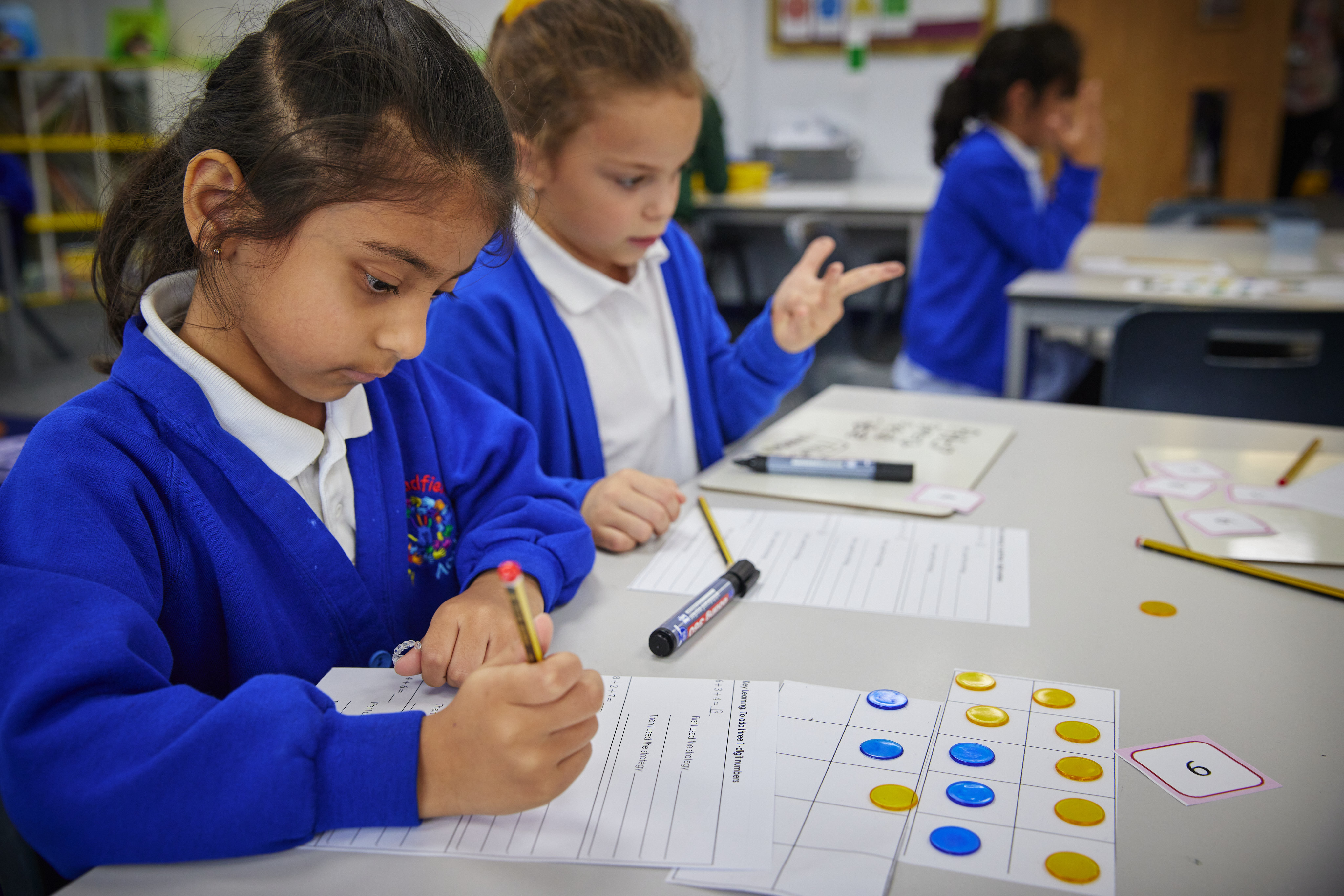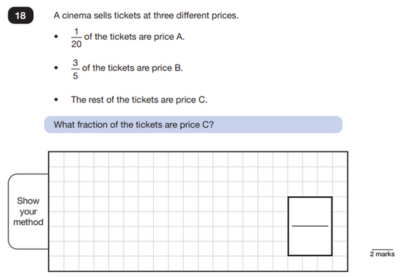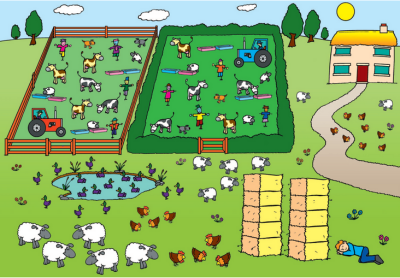
As schools gear up for the SATs assessments, it’s an opportune moment to reflect on the in-school learning journey that our Year 6 pupils undertake, from their early days in EYFS then spanning across Key Stage 1 and Key Stage 2.
Before we begin, a couple of questions merit our attention:
Does the responsibility for SATs success solely rest on Year 6 teachers? Who is accountable for the attainment of our Year 6 pupils?
In this blog we dissect one SATs assessment question. We highlight how the success of ALL pupils is a culmination of efforts, creating connections and building on prior knowledge throughout their whole primary journey. The foundation for SATs success is not confined to the final year of primary school and not by cramming in SATS practice paper after paper. Instead, it’s through a continuous commitment to high quality teaching across ALL year groups. Let’s start by delving into the groundwork required and the mathematical journey that pupils embark on to succeed with, not only this assessment question, but more importantly a depth of understanding with fractions:

Let’s look at the Early Years where pupils begin their journey through sharing and grouping, and finding half of an amount. In class, they might apply their sharing skills in different contexts such as distributing sweets among teddies, arranging plastic animals in fields, or allocating balls of wool for toy sheep.

As children progress to Year 1, the National Curriculum guides their learning journey towards recognising, finding and naming a half and a quarter of an object, shape or quantity. The emphasis at this stage is on developing a conceptual understanding of fractions as equal parts of a whole. Pupils explore equal and unequal parts before associating the concept of half to a shape or object being split into two equal parts.

Lesson activities might involve finding half of a quantity within 20, focusing on both equal and unequal groups, providing valuable opportunities for consolidating number sense through comparing numbers.
Before moving ahead, it’s important to ‘ensure that teaching builds on what children already know’ (EEF Page 26). To effectively assess children's mathematical understanding, it’s recommended to use a range of methods, such as ‘observation of children while engaged in activities, setting specific tasks to reveal understanding and discussions with children about mathematics and their reasoning’. Have the children in your class grasped the important pre-requisite concepts? Do you need to plan time to consolidate pupils’ understanding of equal sharing and grouping before looking at fractional notation in more depth?

Moving into Year 2, pupils continue their exploration of halves and quarters, expanding their knowledge to include fractions like 1/3, 1/4, 2/3 and 2/4 of a length, shape, set of objects or quantity. They also begin to grasp the concept that that 2/4 and 1/2 are equivalent.

In Year 3, pupils build on their understanding of part-whole relationships and equal and unequal groups. They use Cuisenaire rods to represent and describe unit fractions and identify the importance of referencing the whole when describing fractions. They begin to find non-unit fractions and connect this with their knowledge of multiplication and division facts. To secure an understanding of equivalent fractions, pupils use fraction bars to explore, describe and explain relationships between different bars on a fraction wall. Pupils in Year 3 will also solve problems that involve adding and subtracting fractions with the same denominator, using pictorial representations and part-whole models like the one below.

Pupils strengthen their understanding of addition and subtraction of fractions with the same denominator within one, and this is extended in Year 4 to include fractions equal to or greater than one. Experiences with adding and subtracting fractions (with the same denominator) should go beyond teaching the procedure of ‘just add the top numbers’. To deepen conceptual understanding, pupils should be exposed to carefully selected representations such as fraction bars or Cuisenaire rods, encouraging them to make connections between mixed numbers and improper fractions.
They recognise and show – using diagrams – families of common equivalent fractions and extend the use of the number line to connect fractions, numbers, and measures.

In Year 5, the mathematical concept of equivalent fractions (which pupils were first introduced to in Year 2) is strengthened and extended to pupils being able to identify, name and write equivalent fractions of a given fraction. They continue to expand their learning from Year 3 and 4 by practising adding and subtracting fractions to become fluent through a variety of increasingly complex problems.
In Year 6 pupils further develop their fraction understanding and use their earlier skills of equivalence and simplifying to compare and order fractions. Pupils have experienced addition and subtraction of fractions with the same denominator or where one denominator is a multiple of the other in previous years. Time should be taken to connect the new learning in Year 6 to previous models and structures in different contexts. They also use common factors to simplify fractions and use common multiples to express fractions in the same denomination.


So, what does this mean for you? I’m still curious about the extent to which Reception and KS1 teachers recognise the vital impact they have on fostering a depth of understanding in their pupils, increasing their confidence to tackle both familiar and unfamiliar problems in their SATs.
Do senior leaders ‘prioritise resourcing for younger year groups, to better engineer success from the start of a pupil's mathematical journey’? (Coordinating Mathematical Success, July 2023)
I'm also curious to know if the knowledge gaps repeatedly revealed in assessments are shared with teachers in different year groups, enabling them to plan effective teaching strategies for those areas.
Why don’t you engage all your teachers in analysing an assessment question alongside the National Curriculum? Prompt them to reflect on the essential knowledge pupils need to know in each year group for success. What observations do they make, and most importantly, what insights do they derive from this activity?
You might like to use this template to guide your conversation.
MMp SATs success review template for schools
Author: Ravi Mohindru, Design Lead, Mathematic Mastery Primary
Follow me @RavMoh5 and @MathsMastery on X for more #SATsSuccess insights over the coming weeks.
Wednesday 7 February
4pm
In this session, Dr Helen Drury (Executive Director of Education) and Ravi Mohindru (Design Lead) will explore in even more depth the mathematical learning journey that pupils take from Reception to Year 6 to be fully prepared to succeed in their SATs.
At Ark Curriculum Plus, our subject excellence programme provides a coherent curriculum that builds from early years to Year 6. Bringing together our evidence-based curriculum, subject-specific CPD, and comprehensive teaching and assessment resources, Mathematics Mastery provides everything you need to deliver brilliant maths lessons. Plus, as a partner school, you’ll work closely with one of our subject experts, who will guide you step by step, helping you to achieve and sustain excellence.
Learn more about the programme's impact and how you can join us for only £2150, thanks to a big DfE-funded subsidy from the Education Endowment Foundation (EEF).
Related Posts